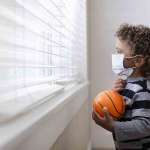In this article, you will find:
Hot Weather Health Emergencies
Even short periods of high temperatures can cause serious health problems. Two common problems are heat stroke and heat exhaustion.Heat Stroke
Heat stroke occurs when the body becomes unable to control its temperature: the body's temperature rises rapidly, the sweating mechanism fails, and the body is unable to cool down. Body temperature may rise to 106°F or higher. within 10-15 minutes. Heat stroke can cause death or permanent disability if emergency treatment is not given.
Recognizing Heat Stroke
Warning signs of heat stroke vary but may include:
- an extremely high body temperature (above 103°F, orally)
- red, hot, and dry skin (no sweating)
- rapid, strong pulse
- throbbing headache
- dizziness
- nausea
- confusion
- unconsciousness
If you see any of these signs, you may be dealing with a life threatening emergency. Have someone call for immediate medical assistance while you begin cooling the victim:
- Get the victim to a shady area.
- Cool the victim rapidly using whatever methods you can For example, immerse the victim in a tub of cool water; place in a cool shower; spray with cool water from a garden hose; sponge with cool water; or if the humidity is low, wrap the victim in a cool, wet sheet and fan him or her vigorously.
- Monitor body temperature, and continue cooling efforts until the body temperature drops to 101-102°F.
- If emergency medical personnel are delayed, call the hospital emergency room for further instructions.
- Do not give the victim alcohol to drink.
- Get medical assistance as soon as possible.
Heat Exhaustion
Heat exhaustion is the body's response to an excessive loss of water and salt contained in sweat. Those most prone to heat exhaustion are elderly people, people with high blood preset and people working or exercising in a hot environment.
Recognizing Heat Exhaustion
Is Your Child Seeking Constant Reassurance? (How to Address Anxiety)
“What if…?” It’s the older-kid version of “Why?” A question that arises from your child’s increasing capacity to think about and anticipate the future. How exciting! But with this newfound cognitive ability comes the discomfort of uncertainty. “What if it rains on my birthday?” “What if our dog gets out?” “What if my friends laugh at my new shirt?” Read More
Warning signs of heat exhaustion include:
- heavy sweating
- paleness
- muscle cramps
- tiredness
- weakness
- dizziness
- headache
- nausea or vomiting
- fainting
- symptoms are severe, or
- the victim has heart problems or high blood pressure.
What to Do
Cooling measures that may be effective include:
- cool, non-alcoholic beverages, as directed by your physician
- rest
- cool shower, bath, or sponge bath
- an air-conditioned environment
- Lightweight clothing
